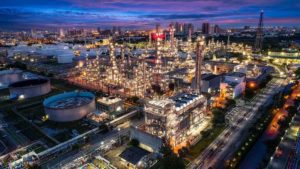The job of a data center manager is not an easy one. As if insatiable demand for more capacity and implementing sustainable operations were not enough, data center managers are increasingly having to deal with an unexpected challenge – an unreliable power grid. The need to decarbonize and limit global warming is driving a massive shift: the worldwide utility grid is becoming a distributed and renewable architecture. The unintentional consequence is that data center operators must now make changes to their data center power ecosystem to ensure availability. The addition of on-site energy storage is emerging as a leading technology in this back-up power system for data centers in addition to a UPS (uninterruptible power supply) and extended run generators.
Battery energy storage systems (BESS) are being used in many other applications as part of a system to improve performance. In Schneider Electric’s new White Paper 185, we show how BESS helps data center cost, availability, and sustainability performance. Let’s compare the BESS used in data centers with the one used in incredible Formula One race cars. Considered the highest class of internal racing for open-wheel, single seater formula racing cars, Formula One uses a battery as part of an energy recovery system from brake usage and thermal energy from the car’s exhausts to improve the track management performance.

Strategic Discharge – “maximize benefits”
F1 car – The drivers, who must make split second decisions and are sometimes compared to fighter pilots, have a button on the steering wheel to discharge the battery and boost the turbo charger output for temporary speed increase. Passing another car is the obvious use, but it’s difficult to pass in F1. Using this functionality to keep drivers behind you and out of DRS (drag reduction system) zone is also commonplace. Another use would be to fend off competitors trying to overtake you. One thing is for sure, you want to use it often for the most impact to reduce lap times or overtake other cars.
BESS for Data Center – Let’s consider that a two-hour battery gives you many more opportunities for benefit vs a 5-10 minute UPS. When the utility is at or near capacity, it may employ “surge pricing.” This expense can be avoided by discharging the BESS. The other opportunity to discharge the Battery energy storage systems (BESS) is when the utility is over capacity and the site is experiencing extended brownouts or blackouts. There are also situations where a renewable utility source sees a large load drop off or on the grid, which causes frequency to go high or low for a sustained period of time. And should you need more capacity in your data center for a period of time, the BESS can be used to increase the power capacity. Again, liberal use will maximize availability, cost, and sustainability benefits.
Strategic Charge – “harvesting energy”
F1 car – There isn’t much variability here, as charging is mainly done during braking and harvesting heat.
BESS for Data Center – Charging a BESS using a low carbon source goes a long way to help lower carbon emissions as it can be discharged when utilities are providing higher carbon fossil fuel power. Even better is coordination with the utilities then charging the BESS during planned times of renewable energy curtailment. Coordination will become much more commonplace as the grid and the data center back up sources become an ecosystem and coordinate for the benefit of not only the data center operators but everyone else on the utility grid.
Battery Type – Lithium Ion
F1 car – Cost is not an issue. There are restrictions on how much energy the battery can store and release 4MJ or 1.1kWh – about the same as an average, single U.S. house uses in two days. Weight is a major factor but must be between 20-25kg. Lithium Ion is the choice because power will not degrade based on discharges and it operates predictably in varying temperatures.
BESS for Data Center – Will be typically sized to power the data center for two hours and remember data centers can range from 1 Mega Watt (equivalent to 750 US homes) up to hundreds of Mega Watts with Bess ranging from 30 minutes up to multiple days. Cost and size are major considerations, as well as the ability of the batteries to operate in extreme temperature variations in certain geographies.
Read our new guide to understanding BESS
Battery storage systems are a key element for F1 cars, and they are emerging in data centers. In both cases, they are used as a performance boost. For F1 cars, they help to overtake or lap faster. For data centers, they improve availability, optimize costs, and improve sustainability. Formula One doesn’t stop at the checkered flag and neither do data centers.
For more information on how BESS work in data centers, please read Patrick Donovan’s new blog on the rise of BESS and visit the new white paper from Schneider Electric’s Energy Management Research Center: Understanding BESS: Battery Energy Storage Systems for Data Centers.




Add a comment